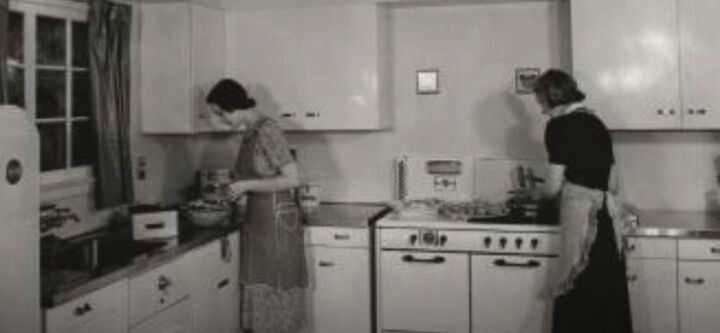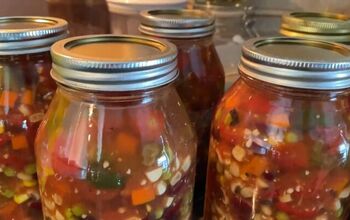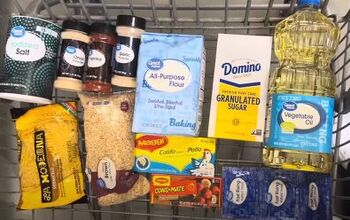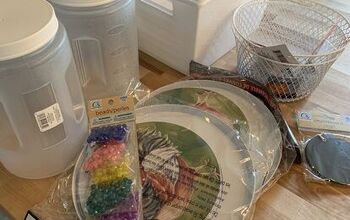World War 2 Rationing Recipes + Lessons To Live By In Modern Life

From the stringent World War 2 rationing measures imposed on everyday necessities to the heart-wrenching evacuation of children from urban centers to the countryside, each aspect of life during this tumultuous period reveals a tapestry of resilience, sacrifice, and community solidarity.
World War 2 challenged families struggling to make ends meet in the face of scarcity. Shortages tested the ingenuity and resourcefulness of households nationwide. It was also a time of remarkable innovation as they faced circumstances with courage and determination.
The kitchen became the bastion of resilience and resourcefulness.
With wartime scarcity, the kitchen emerged as more than just a place of culinary creations. This heart of the home found housewives grappling with the stark reality of limited supplies.
Essential items such as meat, sugar, and dairy were subject to strict rationing and prompted a new way of managing traditional kitchen recipes and culinary techniques.
1. Making the most of rations
Creative solutions were concocted to stretch meager rations with what little was available. Housewives became adept at substituting scarce ingredients with alternatives.
Recipes were transformed to accommodate powdered eggs, dried milk, and other new substances. Every scrap of food was carefully hoarded and repurposed and nothing was wasted.
These were the following ration amounts for one person in 1944:
- Bacon and ham, 4 ounces, which is about four slices per week.
- Meat, 1 shilling and 10 pence worth, which was about the equivalent of 2 to 3 pounds and consisted of mutton, sausages, or the end of beef.
- Sugar, 8 ounces
- Butter and margarine, 2 ounces
- Cheese, 2 ounces
- Tea, 2 ounces
- Egg, 1 fresh
- Milk, 3 pints
- Preserves, 1 pound every two months.
- Sweets and chocolates, 12 ounces every four weeks.
- Cooking fats, 2 ounces.
Shortages meant people would receive less than these official ration amounts. Though fruits and vegetables were not rationed, they were in short supply.
2. Famous homefront recipes
All of this rationing led to iconic meals and recipes.
Mock fish
Fried fish cakes were made with grated potato mixed with mashed or canned fish.
Wartime casserole
This hearty dish combines small amounts of meat with potatoes, onions, carrots, seasonings, and herbs mixed and slowly cooked in a pot.
Woolton pie
Named after Lord Woolton, this is a vegetable pie made with whatever vegetables were available, such as carrots, potatoes, cauliflower, and turnips encased in a pastry crust made with flour, water, and a small amount of fat or mashed potato.
Carrot cookies
Grated carrots are added to flour and a small amount of sugar, formed into cookies, then baked.
Powdered egg pancakes
Powdered and dried eggs were staples in the kitchen. These pancakes were made with powdered eggs, flour, water, and a pinch of salt.
Vegetarian sausages
With meat in short supply, these sausages were made with herbs, breadcrumbs, and grated vegetables formed into sausage shapes and baked or fried.
Eggless sponge cake
Eggs were severely rationed so this cake was made eggless. These cakes were surprisingly light and fluffy even without eggs.
3. Victory gardens to nourish the soul
Gardens took on new importance as sources of sustenance, solace, and a boost in morale. Communities rallied together to share seeds, knowledge, and labor.
4. Darkened homes were bright inside
Windows were often taped and blackout curtains were drawn tight to keep families safe from air raids and other dangers of the war.
5. Finding work and employment
Luckily charitable organizations were lifelines and provided food and clothing to the poorest who were struggling to survive.
Acts of kindness, however small, were glimpses of humanity’s capacity for compassion during food and rationing in World War 2 and the struggles that came after the war.
World War 2 rationing
These times were a remarkable testament to human resilience, resourcefulness, and community spirit.
Have you tried any recipes from these times? Let us know in the comments and share the recipes with everyone in the spirit of times on the homefront.
Next, learn How 1950s Frugality Can Save You Money Today.
















































Comments
Join the conversation